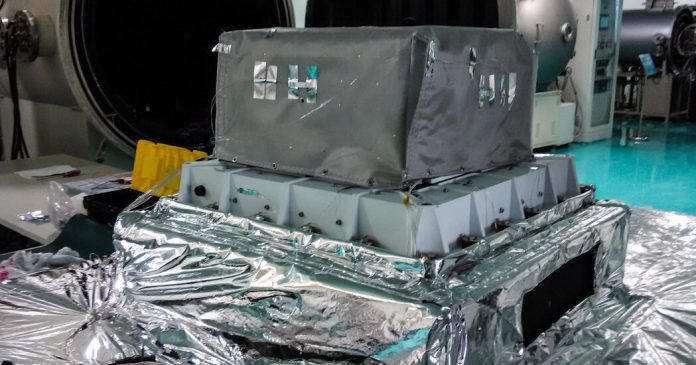Looking for to burnish its status on the earth, China is portraying its Tiangong orbital outpost as an area station that’s accessible for scientists all over the place, not simply for individuals who occur to reside in different international locations with established house applications.
“We stand able to conduct extra worldwide cooperation and exchanges with international locations and areas dedicated to the peaceable use of outer house,” Wang Wenbin, a spokesman for the Chinese language Overseas Ministry, stated in April.
For the Worldwide Area Station — a partnership between NASA, Russia, Canada, the European Area Company and Japan that has been in orbit for greater than twenty years — the laboratory sources are cut up among the many associate nations, which then supply their scientists alternatives to ship experiments to the house station.
However scientists dwelling in international locations which are exterior of the partnership are typically shut out of the I.S.S.
By way of a United Nations program known as “Entry to Area for All,” China has provided alternatives for scientists from any nation to get their experiments carried to the Tiangong house station.
The United Nations introduced the primary spherical of 9 awards in 2019, which included initiatives from India, Japan, Peru, Mexico and Saudi Arabia.
One of many chosen experiments, POLAR-2, is a world effort led by the College of Geneva to review distant gamma-ray bursts.
Gamma-ray bursts are a few of the most violent explosions within the universe, brought on by exploding stars or merging neutron stars. The explosions ship brief, intense jets of ultra-high-energy photons generally known as gamma rays touring throughout the universe.
As its title suggests, POLAR-2 is a follow-up to POLAR, a smaller detector that flew to an earlier, smaller Chinese language prototype house laboratory.
“Traditionally, College of Geneva had a powerful connection to Chinese language analysis teams,” stated Merlin Kole, the undertaking supervisor for POLAR-2, which is scheduled to be launched to Tiangong in 2025.
The experiment examines whether or not gamma rays from a gamma-ray burst line up in a selected manner. Greater than a decade in the past, measurements by an instrument on a Japanese spacecraft instructed that gamma rays have been typically linearly polarized — that’s, the oscillating electrical fields of the gamma rays have been parallel to one another like a squadron of airplanes flying stage as an alternative of with their wings skewed in each path.
However the information from POLAR, which flew in 2016, instructed that the gamma rays have been unpolarized.
The POLAR scientists thought-about how they might get a bigger, follow-up detector launched to house. They determined to not search to construct a devoted satellite tv for pc of their very own.
“That may be far more advanced on the entire,” stated Agnieszka Pollo, an astrophysicist on the Nationwide Middle for Nuclear Analysis in Poland and the principal investigator for the Polish a part of the POLAR-2 collaboration.
And the Worldwide Area Station was additionally not thought-about viable as a result of “there’s a massive competitors for that,” Dr. Pollo stated, “and that is additionally not precisely so low-cost and simple.”
So when the analysis alternative for Tiangong was introduced, “Comparatively shortly we have been in a position to submit one thing, and we received acceptance within the first spherical,” Dr. Kole stated.
Tiangong’s high-speed communications system will enable tens of gigabytes of knowledge to be despatched to the bottom every day. That can enable scientists to investigate all the information which will comprise nuggets of discovery reminiscent of very weak gamma-ray bursts or different astrophysical occasions that may in any other case be discarded as noise.
There may be additionally a supercomputer on the house station to investigate the info whereas it’s nonetheless in house. That can enable fast calculation of the place a gamma-ray burst originated. That info may then be shared with astronomers on the bottom for fast follow-up observations utilizing different telescopes, Dr. Kole stated.
Thus far, the collaboration with Chinese language house officers has gone effectively, Dr. Kole stated, though that may contain wading by means of the Chinese language forms.
“There are a number of companies concerned, and we don’t speak to all of them immediately,” he stated. “In order that makes it a bit difficult at instances. However after we really want to know one thing, we determine it out.”
As a result of the $2 million instrument is basically being in-built Europe after which shipped to China, the undertaking includes forms and paperwork with European officers, too.
“We’re not giving secrets and techniques, in fact,” Dr. Kole stated. “All the elements are comparatively straightforward and nothing is secretive. It’s a scientific instrument. However, yeah, there’s no very clear bureaucratic channel to do that correctly.”


